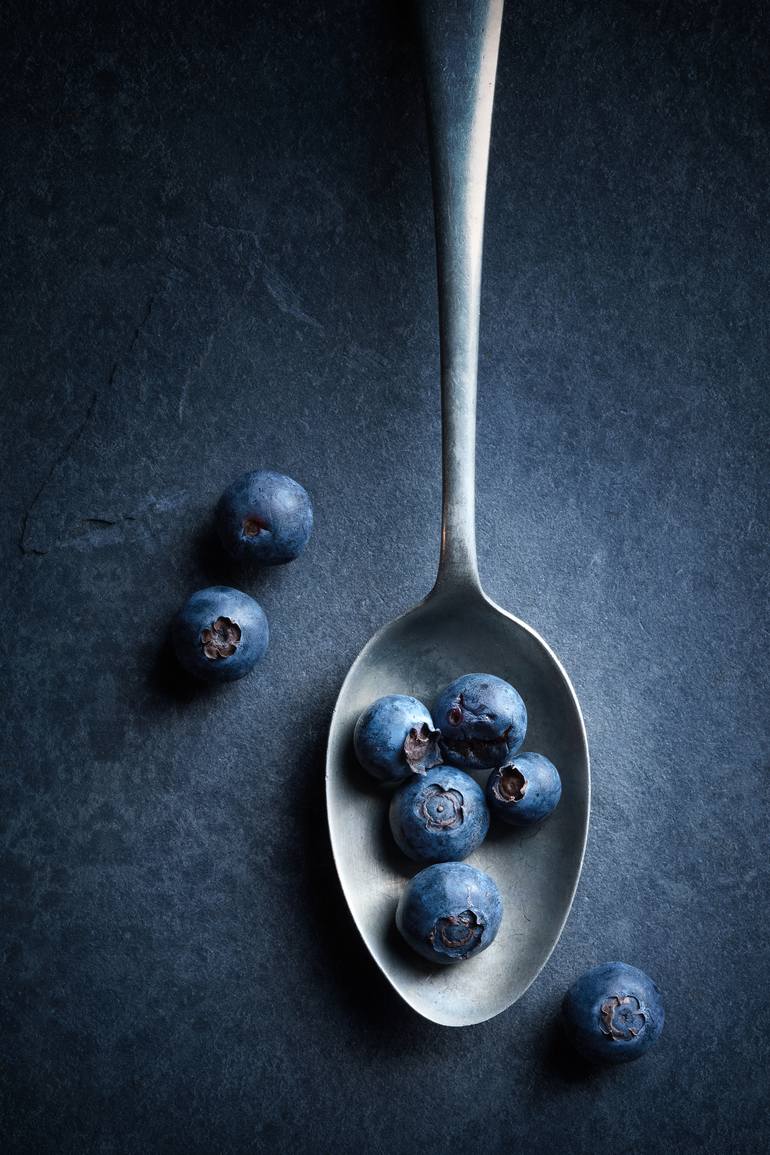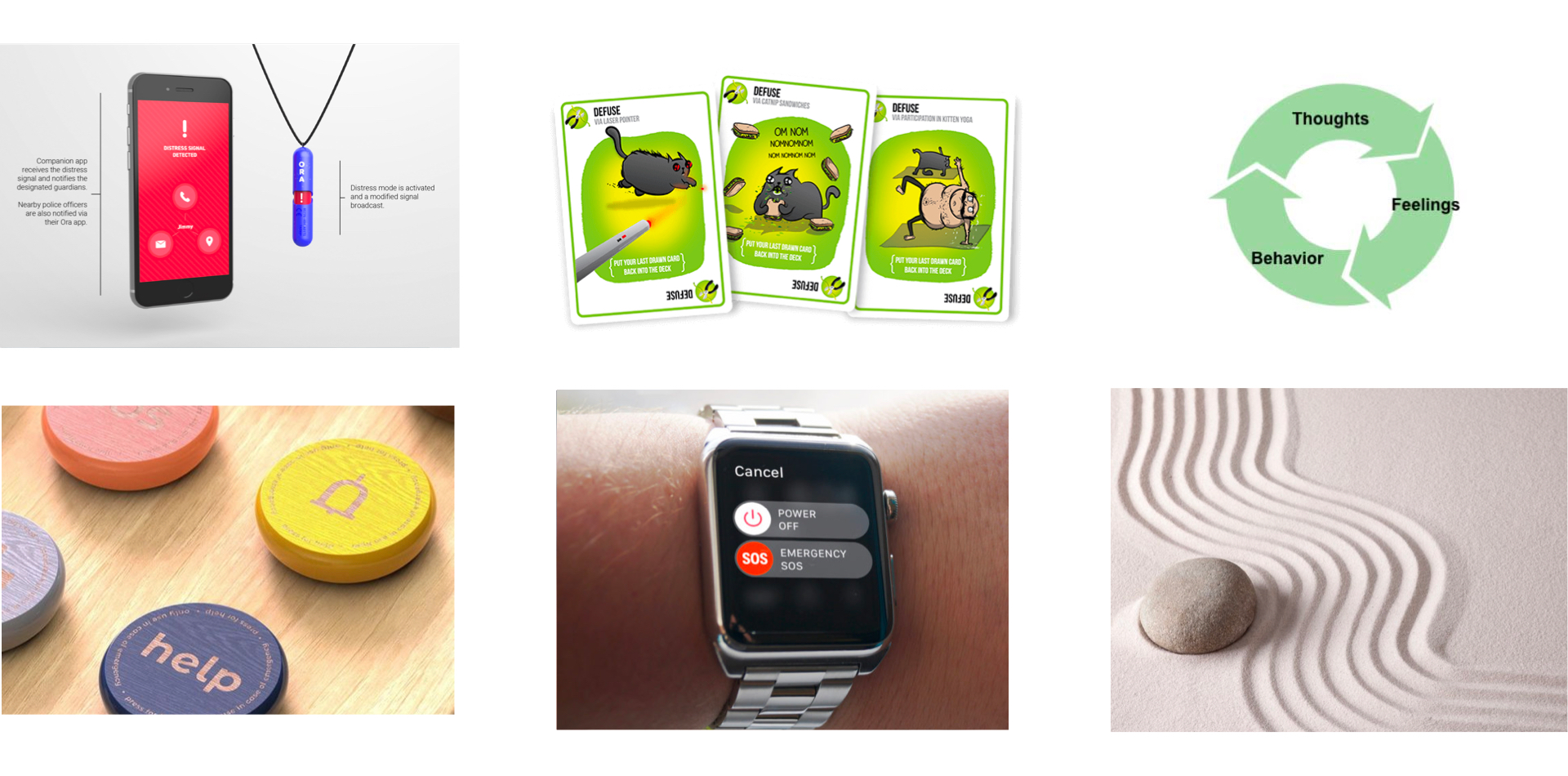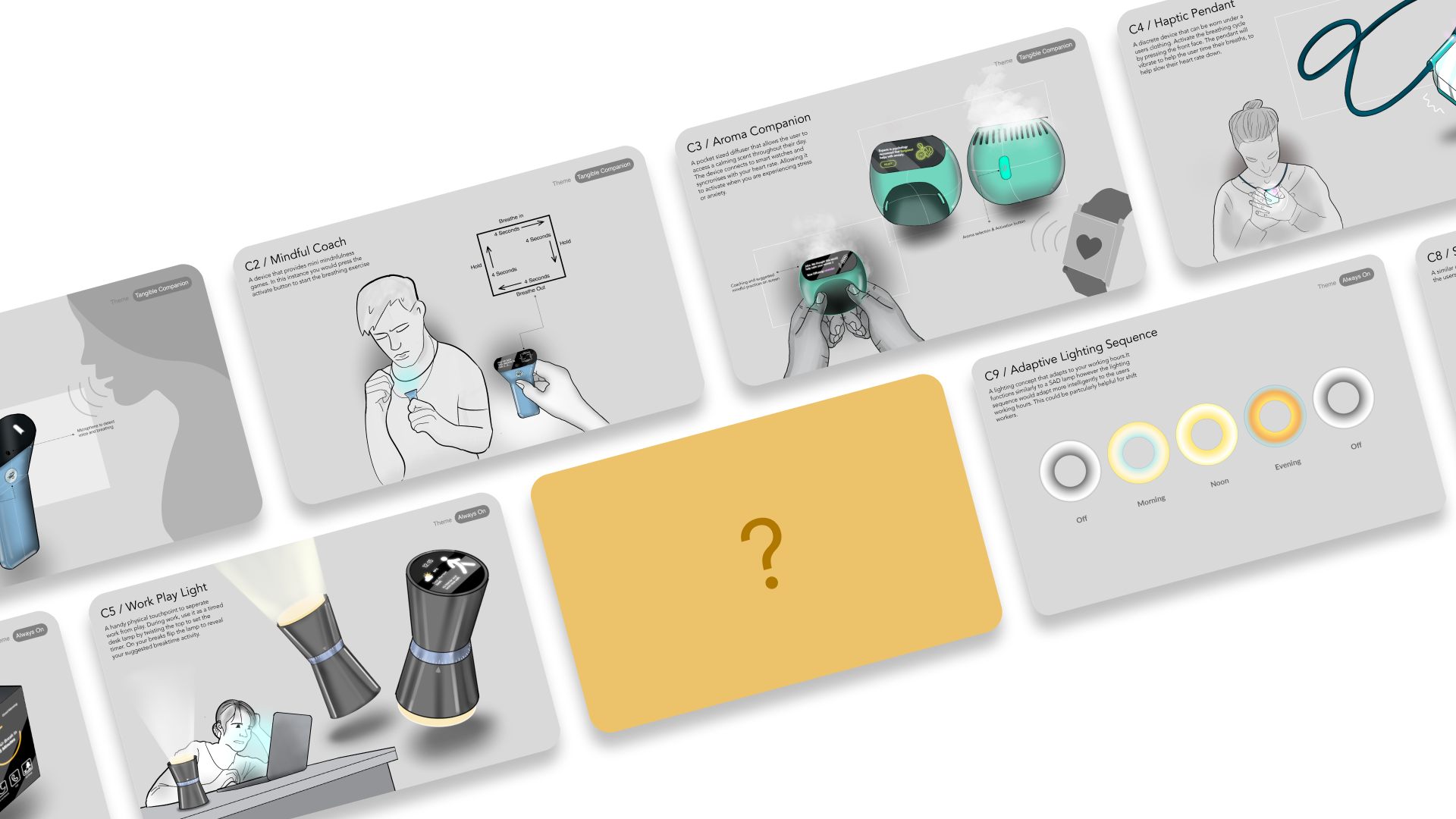Design for Mental Health / Persona Development & Design Directions
This article series is intended to demonstrate ProdActive’s Design process and philosophy. We cannot, and do not claim to provide any form of clinical therapy or recommendations regarding mental health. If you, or someone you know, needs any help with mental health related issues please contact your local GP and/or mental health charities such as Mind or Samaritans. If you are in an emergency regarding mental health you can also contact 999 or 111 for more immediate help. We hope you enjoy reading about our approach and process.
Part 4
Welcome to the fourth article in our Design for Mental Health project on Stress. In this post we will be showing you how we used our previous research to create User Personas. These are archetypical users whose goals and characteristics represent the needs of a larger group of users. Having a deep understanding of our target audience is fundamental to creating an exceptional solution for their needs. We are also going to explore our hypothesised day-in-the-life of our three key Personas which we felt best represented our ideal target audience. This focus helped us find appropriate therapeutic interventions for the stress they experience in their daily lives.
In order to create relevant Personas for the broad topic of mental health, we researched ways we could visualise a person's stress, and in particular their stress tolerance. There are many metaphors we can use to communicate and visualise the way we experience stress - here are our top five ways to describe our stress levels;
The Bathtub

This can be imagined as someone’s metaphorical Bathtub filling in their mind as they accumulate stress. If one's Bathtub is full this means they are dealing with high levels of stress and their ability to deal with problems they can normally face easily when they are calm is diminished. If their Bathtub overflows, a person's responses to even small amounts of additional stress could range from a mental or an emotional breakdown, or even more serious mental health issues if not dealt with appropriately.
Band Width

Using the bandwidth analogy we think of ourselves in terms of our processing capacity - everything we experience is like a packet of data, the more we have to process at once the more bandwidth we need. Too much all at once can ‘clog the pipe’ and grind us to a halt, like a computer ‘hanging’ because there is too much information to process at any one time.
Spoons (of energy)

This is the idea that every person starts their day with a different amount of mental energy. Some days you might have 100 spoons to get through your day. Some days you might only have 20. It’s about visualising and understanding how much mental energy one has each day to manage their stress levels, and their capacity to tolerate more.
Spinning Plates

Some people imagine each aspect of their lives as holding up a series of spinning plates. Everything we feel like we have to do or thoughts that reoccur can be represented by a plate. If we have too much on our mind - too many plates - we can lose track of some and they start to fall. To keep all our plates spinning we must balance our time and focus carefully.
The Weather

This is a common metaphor to describe your mental state or mood by comparing yourself to Weather (perfectly British we know!). In art and literature, Pathetic Fallacy is used to describe human emotion in inanimate objects. For example a dark cloud above someone’s head could represent sadness or depression. A foggy or clouded mind may be one that is full of thoughts and worries. One that is clear like the blue sky can represent a mind of clarity and balance.
Our six initial personas

Through our survey we collected an age sample range between 18 to 75 years old, though the bulk of the survey respondents were aged between 25 and 60 years old. Therefore we decided to focus on this age range with what data was supplied to us. We wanted to focus on understanding what stresses our Personas go through in their usual day, what kind of philosophical approach they have to their own wellbeing, and what type of generational and cultural background informs their stance on mental health.
With this in mind we varied our personas based on six life areas that could affect their mental health:
- Occupation
- Working Style (Office or On-site / Remote / Hybrid)
- Home Environment (Rural / Urban / Suburban)
- Income Class ( Working / Middle / Upper Middle )
- Gender (Male / Female / Non-binary / LGBTQIA+)
- Age by Generation (Gen Z, Millennial, Gen X, Baby Boomer)
- Living Situation (Lone / With Partner (DINKY) / Partner & Children / Shared Living / Single Parent with Children)
We gave them each:
- An archetypal name (related to their well being philosophy)
- A short biography
- A list of three needs (conventionally this in persona creation are their frustrations, also known as pain points)
- An opportunity (ways in which we could help fulfil their needs, but where they are currently being held back by something).
- A measure of their average daily stress levels (comparing their sources of stress; Work, Family & Friends and Self - see our previous article where we use our survey results to explore what typically causes people stress)
- A Wellbeing Goal (This was directly lifted from real responses to our final survey question where we asked about what mental wellbeing meant to them)
The top three personas we felt needed our help the most and represented the most promising opportunities for innovation were the; ‘Experienced Provider’, ‘Living for the Weekend’ and the ‘Head in the Cloud’ Personas. Through a breakdown of their day-in-the-life stories we can explain how these types of people would need a solution more than the three other personas we created.

Day in the life stress maps
We created day in the life stress maps for our three key Personas in order to understand what their main stress triggers were throughout a regular working day. From these maps we were able to pinpoint key opportunities for design intervention (to help relieve/prevent/alleviate their stress).
Each map has a dotted white line that represents the Persona’s stress tolerance (resembling their Bathtub limit / bandwidth / number of spinning plates etc.) . If the red line moves above their tolerance for too long it means they are in an unhealthy state of stress arousal, and may not have the capacity to deal with any additional stressful moments that come their way.
Key Persona 1: The Experienced Provider

For the ‘Experienced Provider’, we can see that their most stressful events in their working day is during their commute and just before their lunch break, this may be due to them cramming too much in their day. Because this person likes to be in control of things, events in their day that haven’t gone their way could have increased their stress levels.
We created two different design themes to help direct ideas to reduce their stress, the first of which we called ‘Resilience Training’. This is how - based on our learnings about stress coping mechanisms - people could develop more resilience to stressful situations through techniques like practising self compassion and kindness. An example of this would be to celebrate when they have successfully dealt with a stressful moment, whatever the method they use. A product / device that could provide timely encouragement, offer reassurance and advice could help them when they feel their stress levels have been triggered. Below is a mood board that helped us direct our ideation for this theme.
Resilience Training

The second direction we felt could help this persona is the ability to recognise their physical symptoms earlier using a ‘Tangible Companion’. This is where a small hand held device could help a person learn bite size forms of therapy when they are in stressful periods throughout their day. Below are some examples of products and interactions we used as inspiration for this concept area.
Tangible Companion

When mapping the ‘Living for the Weekend’ Persona, we found that their stress levels were more sporadic, but their stressful moments more frequent, due their giving nature. We hypothesised that they tend to give too much of their mental energy (‘Spoons’) away to others rather than focusing more on themselves when they need it most.
Key Persona 2: Living For the Weekend

The first design theme we felt was appropriate for this Person was expressed with an analogy we called the ‘Red Button’. This is where we could design a system that would help people escape from their current stressful situation, by showing them a clearer route away from their stress. Whether through grounding mindfulness exercises, providing an opportunity to contact someone for help discreetly, or giving them some form of physical reminder to help them focus more on themselves. Below are some visual examples of these principles that helped us with our ideation process.
The Red Button

The second theme we felt would be useful for this persona type was designing a ‘Ritual Aid’ to help them wind down after stressful periods. This is more of a common form of stress release that takes influence from different cultures from our previous research, which we felt was appropriate for this persona due to the increase in time they have available for self care in their evenings, rather than during their day. Examples of this would be going to the spa (Russian Banya / Sauna), doing exercise (Yoga), or even simple activities like taking a bath, lighting candles (Hygge) or having a cup of tea (how British of us!).
Ritual Aid

Key Persona 3: Head in the Cloud
For our last Persona, the ‘Head in the Cloud’ type, we hypothesised that they as a remote worker could have a lower stress tolerance, due to being constantly connected and available, even during times where they might normally be focussed on themselves. We think this type of person is more prone to being consumed in their work, not able to take many breaks, are constantly in their own head and feel anxious a lot of the time.

Our first design theme for this user is being able to prevent becoming ‘Lost in Thought’. We felt that there was an opportunity for these types of people to reduce their stress levels by recognising their negative self-talk and overthinking, before it is allowed to consume them. We theorised that bitesize interventions might be able to help bring them out of their spiral by incorporating activities such as mindfulness breathing exercises, potentially with an element of gamification. Below are some examples of the type of the visuals we used to ideate around this concept.
Lost in Thought

Always ON
The last theme we developed was called ‘Always ON’. This is where our Persona blurs their work and non-work spaces and times, thereby creating a mindset of always being online and in work mode. We decided to ideate around this theme where a solution could introduce a metaphorical or physical divide between work time and non-work time, allowing them to ‘switch off’ mentally from their day. Below are some examples of how we saw our ideation emerging, with a particular focus on atmosphere and interaction.

Summary
This concludes our fourth article in the design for mental health series. We covered how we developed user Personas based on our previous research, and dived deeper into their daily lives through a map of their stress levels in their regular working day. This then helped us find unique intervention points for each persona to create design themes and directions for our ideation process. We feel it is important to get to this level of depth and understanding of the target market to ensure we are solving the right problems for them, in ways that are accessible and provide a delightful experience for them.
We hope you enjoyed this stage of our project. In our next article we will be demonstrating our ideation methods and concept development based on the design themes ‘Tangible Companion’ and ‘Always ON’.

Sources
Images Sources
Figure 1. Curology. (2019) Available at: https://unsplash.com/photos/UY1AaiAu67E (Accessed on 19 July 2022)
Figure 2. Vitor. (2018) Tubes, Available at: https://unsplash.com/photos/UoIiVYka3VY (Accessed on: 19 July 2022)
Figure 3. SAATCHI ART. (2022) Blueberries on spoon Still Life Print, Available at:
https://www.saatchiart.com/print/Photography-Blueberries-on-spoon-Still-Life/831784/3764754/view (Accessed on: 19 July 2022)
Figure 4. iStock. (2014) Plates Spinning on Sticks stock photo, Available at: Google-spinning-plates (Accessed on: 19 July 2022)
Figure 5. Trapani. T, (2020) Job 38:1 Then the LORD spoke to Job out of the storm. Been through a lot these past few months and boy have I been listening. Taken right before a storm front moved through. You never know what you're going to get when you try to take one of these. Every once in a while they turn out. Available at: https://unsplash.com/photos/6vXQrXVFXjI, (Accessed on: 19 July 2022)